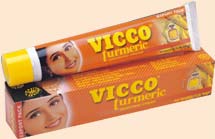Company : Vicco
Brand Analysis Count: # 593
Clearasil was a brand that was synonymous with skin care in India. The brand occupied a distinct space in the Indian market as the ultimate cream for Pimples and acne. But over the years this brand is facing the decline stage in its product life cycle. The b rand reached this pathetic state because of reasons not of its own.
rand reached this pathetic state because of reasons not of its own.
Clearasil is a global brand famous world wide as a cure for acne and pimples. The brand is 56 year old. Mr Ivan Combe of USA invented the product in 1950. It was the first dermatological brand for curing pimples and acne made especially for young skin. In 1961, the brand came into the fold of Richardson Vicks. In 1985 P&G became the owner of Richardson Vicks. Later the company sold of these brands to Boots Pharmaceuticals in the year 2000. In 2006, Reckitt &Benckiser bought the brand globally. The brand came to India in 1967.
Now you can easily see the reason why the brand failed. The brand went through too many ownership changes. Some companies did not feel that the brand was a part of its core portfolio. For example during the ownership of Clearasil by P&G there was no investment on the brand since for the company, the personal care business was not a core area. Hence during this period the brand was not at all promoted. Even though the other owners had tried to revive the brand, frequent changes made the brand vulnerable.
Clearas il during its peak years had the reputation as a strong cream for fighting pimples and acnes. At that time there was no direct competition for Clearasil although there were many skin creams. For a family having teenage girls, Clearasil was an essential brand. But over the years, because of the lack of brand building efforts, the brand became irrelevant to the younger generation. Clearasil slowly became the brand that “my mother used”. When Boots owned the brand, lot of variants were launched. The brand changed its packaging and was extended to soaps.Rather than limiting to acne control, the brand tried to position itself as a skin care brand. But the effort did not bear fruit because by that time, the market was flooded with modern contemporary brands.
il during its peak years had the reputation as a strong cream for fighting pimples and acnes. At that time there was no direct competition for Clearasil although there were many skin creams. For a family having teenage girls, Clearasil was an essential brand. But over the years, because of the lack of brand building efforts, the brand became irrelevant to the younger generation. Clearasil slowly became the brand that “my mother used”. When Boots owned the brand, lot of variants were launched. The brand changed its packaging and was extended to soaps.Rather than limiting to acne control, the brand tried to position itself as a skin care brand. But the effort did not bear fruit because by that time, the market was flooded with modern contemporary brands.
The brand is now owned by Reckitt and marketers expect that the brand will get a new lease of life. The greatest challenge before the new owners is to make the brand contemporary and relevant to the new generation. Reckitt had to find a new differentiation platform for this heritage brand. It has to tap the existing brand equity and try to create a new space for Clearasil. Globally Clearasil is positioned on the basis of Confidence through better skin . The global positioning statement is “Get Clearasil , Get Confidence”. But in India, Cinthol uses this positioning . The brand faces tough competition from the likes of Ponds, Lakme, Loreal and so on .So to find the right space is going to be tough.I think that the brand could take the “ Clear Skin” positioning where by it is not limited to controlling pimples but overall skin care. With the brand Veet from Reckitt is in the same skin care market; the brand managers will have a tough time integrating Clearasil to the portfolio.
source:agencyfaqs,businessline,reckittbenckiser.com
Related Brands
 ust because of the turmeric essence. Manjal is an interesting brand.The brand was launched in Kerala in 2005 by SD pharmacy which is a traditional ayurvedic pharmaceutical company. SD launched Manjal without much hope of making this brand a blockbuster one because of the fact that the market is highly competitive with brands like Medimix and Chandrika ruling the Southern markets.
ust because of the turmeric essence. Manjal is an interesting brand.The brand was launched in Kerala in 2005 by SD pharmacy which is a traditional ayurvedic pharmaceutical company. SD launched Manjal without much hope of making this brand a blockbuster one because of the fact that the market is highly competitive with brands like Medimix and Chandrika ruling the Southern markets. th such a blockbuster name, there was no need for further explaining the benefits of the soap. The product was promoted in media as a natural herbal soap.
th such a blockbuster name, there was no need for further explaining the benefits of the soap. The product was promoted in media as a natural herbal soap. ry. The product was launched in 1956 missed the liberalisation era all together.
ry. The product was launched in 1956 missed the liberalisation era all together.